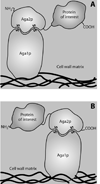A decade of yeast surface display technology: where are we now?
- PMID: 18336206
- PMCID: PMC2681324
- DOI: 10.2174/138620708783744516
A decade of yeast surface display technology: where are we now?
Abstract
Yeast surface display has become an increasingly popular tool for protein engineering and library screening applications. Recent advances have greatly expanded the capability of yeast surface display, and are highlighted by cell-based selections, epitope mapping, cDNA library screening, and cell adhesion engineering. In this review, we discuss the state-of-the-art yeast display methodologies and the rapidly expanding set of applications afforded by this technology.
Figures

References
-
- Schreuder MP, Brekelmans S, van den Ende H, Klis FM. Yeast. 1993;9:399–409. - PubMed
-
- Schreuder MP, Mooren AT, Toschka HY, Verrips CT, Klis FM. Trends Biotechnol. 1996;14:115–120. - PubMed
-
- Kondo A, Ueda M. Applied Microbiology and Biotechnology. 2004;64:28–40. - PubMed
-
- Boder ET, Wittrup KD. Nat Biotechnol. 1997;15:553–557. - PubMed
-
- Boder ET, Wittrup KD. Methods Enzymol. 2000;328:430–444. - PubMed
Publication types
MeSH terms
Substances
Grants and funding
LinkOut - more resources
Full Text Sources
Other Literature Sources

